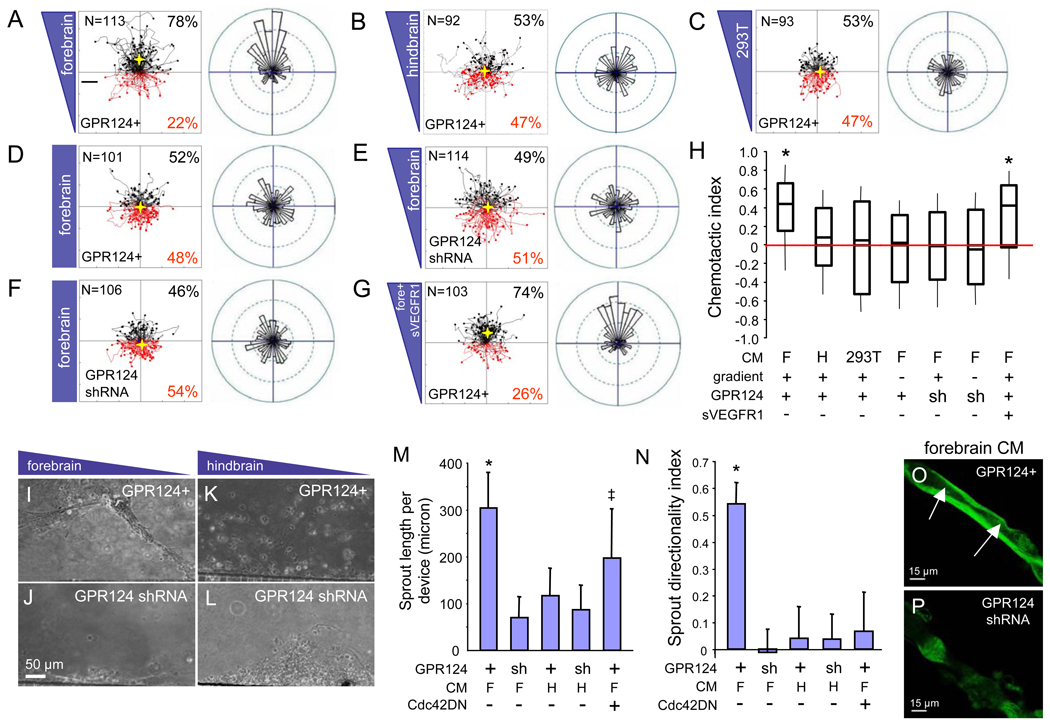Fig. 4.
(A to O) GPR124 regulates CNS endothelial migration and sprout formation in vitro. Motility of the GPR124-expressing brain endothelial line bEND3 was monitored by real-time video microscopy in a microfluidic migration chamber allowing extremely stable, shear-minimized linear chemoattractant gradients. GPR124-overexpressing bEND3 cells (GPR124+) exhibited directed migration towards gradients of conditioned medium (CM) from cultured E12.5 forebrain cortical cells, but migrated randomly to equivalent hindbrain or HEK 293T CM [(A) to (C), tracks of individual cells (left) and angular histograms (right) are shown]. No directed migration was observed with even distribution of forebrain CM across the microfluidic chamber (no gradient), or GPR124 shRNA [(D) to (F)]; migration was further insensitive to a recombinant soluble VEGFR1 ectodomain (400 ng/ml), indicating VEGF-independence [(G)]. Box plot of chemotactic indices of bEND3 migration [(H), center line: median, boxes: upper and lower quartiles, *= p<0.001]. In a sprout formation assay GPR124+ bEND3 displayed collective cell migration and robust formation of stable sprouts towards forebrain CM gradients, but not to hindbrain CM nor upon GPR124 shRNA knockdown [(I) to (L), (M)]. Dominant-negative Cdc42N17 inhibited sprout directionality but not elongation [(M) to (N), *= p<0.05, ‡ = N.S.]. GPR124+ sprouts towards forebrain CM contained stable, contiguous lumens, while rare GPR124 shRNA sprouts were unstable and failed to lumenize. Confocal microscopy [(O) to (P)]. F, forebrain CM; H, hindbrain CM. Error bars are +/− 1 S. E. *= p<0.05. N= 3–5 chambers per condition.

